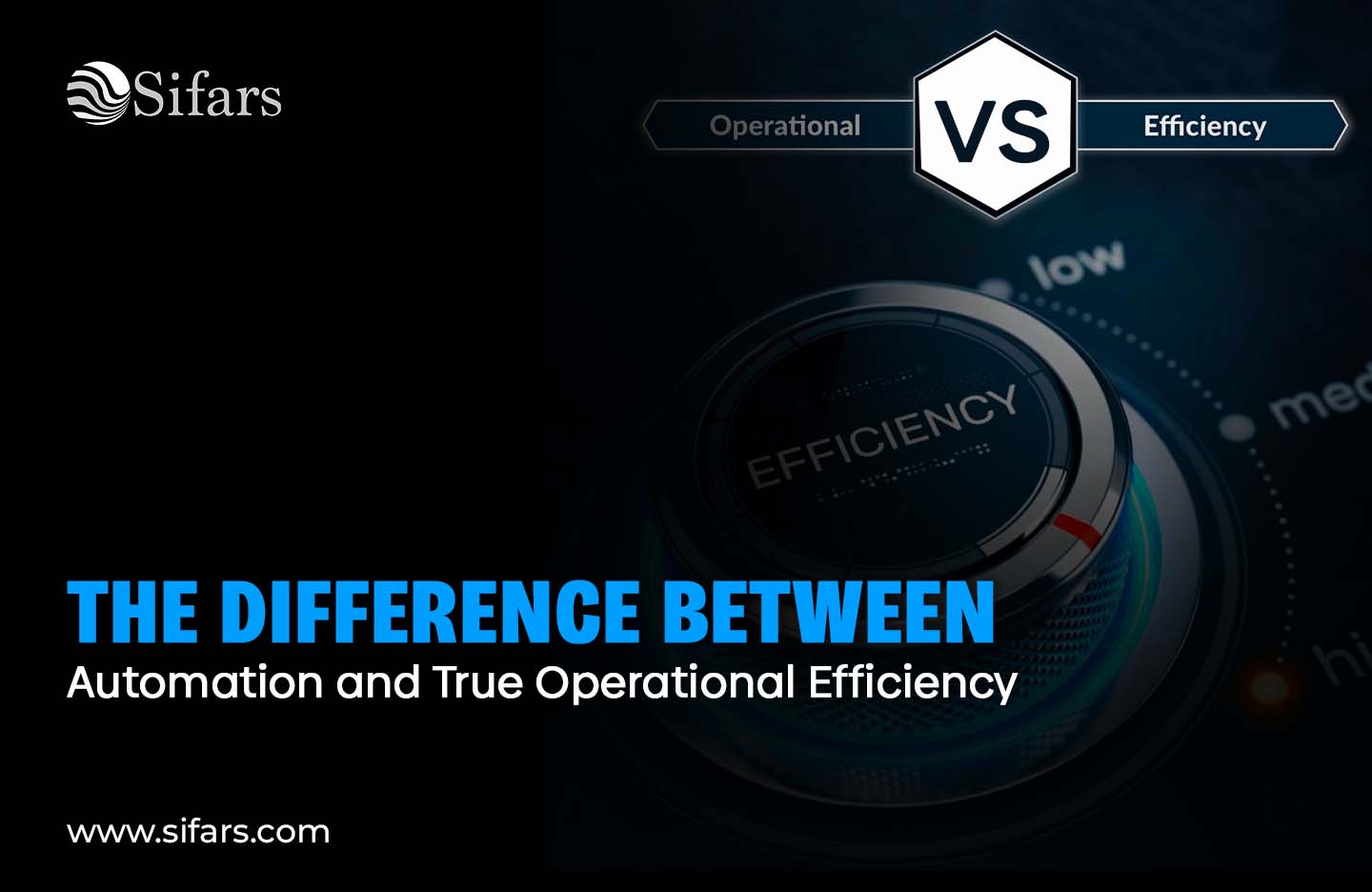And so a lot of people start off thinking that if you automate it, it is efficient. Automation is a step towards but not synonymous with operational efficiency. In practice, if I have to automate a bad process you just move faster in the wrong direction.
Operational efficiency is not about doing more stuff faster. It’s about designing systems with work flowing smoothly, with clear decisions that lead to effort being spent where it brings real vale and so forth.
By separating automation from real efficiency, that insight is important for businesses who want to scale in a sustainable way.
Why Automation Isn’t Everything
Automation is about using software to replace manual action. It accelerates data entry, report writing, approvals and notifications. Although less human effort is involved, that doesn’t mean work is organized better.
No one seems to care that if a workflow is long, messy or unnecessary, automating it only obscures the mess. There are still bottlenecks, handoffs and teams that can’t seem to get things done — they’re just moving half as slowly.
This explains why lots of automation efforts don’t last the distance. They treat symptoms, not the underlying system.
What Operational Efficiency Truly Looks Like
Operational efficiency isn’t just about automating a task. It’s all about reducing friction throughout the whole process.
A good operation is design around results not actions. Systems are how teams work today, not how things were written up in documents years ago. Even the decisions are faster now because information is coming through at the right time and in context.
When efficiency is optimized automation happens by osmosis — it’s not the starting point.
Automation vs. Operational Efficiency – Not Just Semantics Here’s a quick comparison between Automation and Operational Efficiency.
Automate speed at the task level. Increased skills Training and recruitment are likely to be brought forward; driving a productivity train effect, cutting through the business.
Automation reduces manual effort. When there’s less running of garbage work, the unnecessary lifting in general is drastically reduced.
Automation focuses on tools. Operational improvement The operating improvement focus is on systems, behavior (e.g., staff meetings, etc.), and the process of decision making.
Those companies that merely play at automation tend to experience some initial gains but a lot of frustration later on. They make companies that concentrate on efficiency more resilient and scalable.
The Hidden Risks of Over-Automation
Over-automation without re-design can lead to new issues. There is a potential for loss of visibility in the teams. Errors can propagate faster. It is hard to handle an exception in a stiff system.
In some instances, workers spend more time supervising automation than performing productive work. It is a vicious downward slippery slope of reduced adoption, shadow workflows and lack of system trust.
Real efficiency mitigates these risks by simplifying before automating.
It’s easier than ever for businesses to succeed against all odds.
The successful organizations, they realize how work is flowing across teams. They pinpoint bottlenecks, duplicated effort and superfluous approvals. They’d only use automation deliberately.
State-of-the-art enterprises prioritize integrated platforms, intuitive user experiences (UX), real-time data access and a flexible architecture. Automation underpins these fundamentals rather than supplanting them.
The payoff is more fluid implementation, improved decision making and systems that grow without regular handholding.
How Sifars Makes MIOps Efficient
We at Sifars enable businesses to move beyond superficial automation, so they can achieve real operational efficiency. We rethink the process, transform legacy, and apply intelligent automation where it adds value.
Our philosophy is that automation should be a benefit to operations, not an additional source of complexity. It’s not just faster processes they are after — better ones.
Final Thoughts
Automation is a tool. Operational efficiency is a strategy.
Companies who grasp this distinction don’t simply move faster — they move smarter. And by paying attention to how work flows, how decisions are made and how systems support people they build operations that scale with confidence.
Interested in taking operations beyond automation to true efficiency?
👉 Contact Sifars for building tools that work just as hard as other teams.







